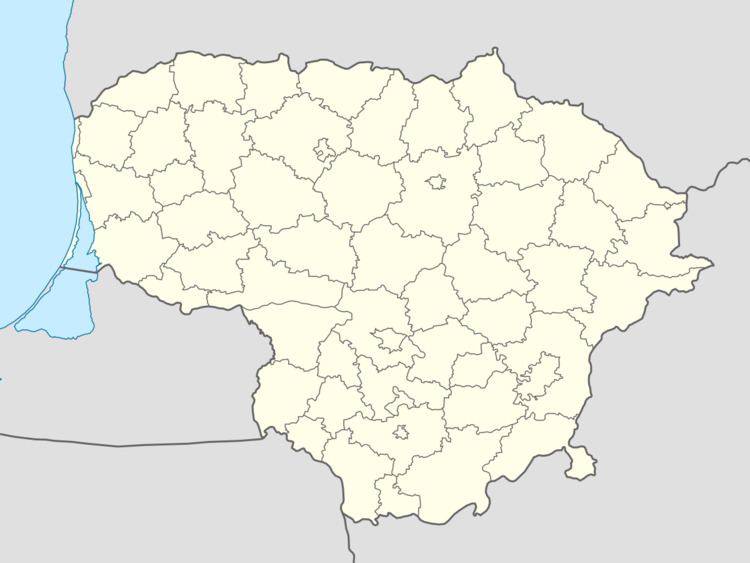Eldership Kupiškis eldership Granted city rights 1791 Population 7,892 (2012) | First mentioned 1460 Area 11 km² Local time Sunday 5:00 AM | |
 | ||
Capital of Kupiškis district municipalityKupiškis eldership Weather 1°C, Wind E at 11 km/h, 97% Humidity Municipality | ||
Kupiškis ( pronunciation ) is a city in northeastern Lithuania. It is the capital of the Kupiškis district municipality. Kupiškis is located on the Lėvuo and Kupa rivers. The name of the city comes from the Kupa River. The Gediminas Bridge crosses the Kupa River. There are six parts of the city, which are named:
Contents
- Map of KupiC5A1kis Lithuania
- History
- Population
- Jews in Kupikis
- Schools
- Art schools
- Preschools
- International relations
- Notable people
- References
Map of Kupi%C5%A1kis, Lithuania
History
Archeological finds provide evidence that even in the 3rd and 2nd centuries BC people dwelt in the surroundings of Kupiškis. However, there is no information on when the very settlement was founded. The findings around the Aukštupėnai mound show that in the 8th century a wooden defence castle stood there.
Kupiškis was mentioned in historical sources for the first time in 1529. It was a property of Sigismund I the Old, the ruler of the Grand Duchy of Lithuania. From 1561 to 1565 it was a center of small ruler's center, belonging to the Upytė district and later the Ukmergė district. At that time the main road from Vilnius to Riga led via Kupiškis.
In 1616, the first Catholic church was built in Kupiškis. In 1781, the first school of the Lankasteriai family was established. The railway line from Daugavpils to Šiauliai to Liepāja was built in 1873.
Population
According to the Department of Statistics of Lithuania, the population of Kupiškis as of January 1, 2005 was 8,243. The ethnic composition of the Kupiškis district municipality, according to the 2001 census, was:
Jews in Kupiškis
Kupiškis, known in Yiddish as Kupishok or Kupisik, was home to 1,444 Jews before World War II. In the summer of 1941, all of the Jewish men, women, and children in the town were herded into a makeshift ghetto and then marched to a cemetery reserved for atheists, where they were shot and buried in unmarked pits. In the aftermath of the war, Christian midwives compiled a list of more than 800 names of the murdered Jews. However, historians estimate that 1,500 to 2,000 Jews were killed by the Lithuanians "Kupiškis self-defense unit".
The Great Synagogue in Kupiškis was built of stone. The red brick portion was a Misnagdim Synagogue. The Great Synagogue was used as the "Culture House" during the Soviet period. The Misnagdim portion is now used as a boiler room for heating the main building which now contains the Public Library and Wall of Memory Holocaust Memorial erected on July 13, 2004.
Schools
Art schools
Preschools
International relations
Kupiškis is twinned with:
